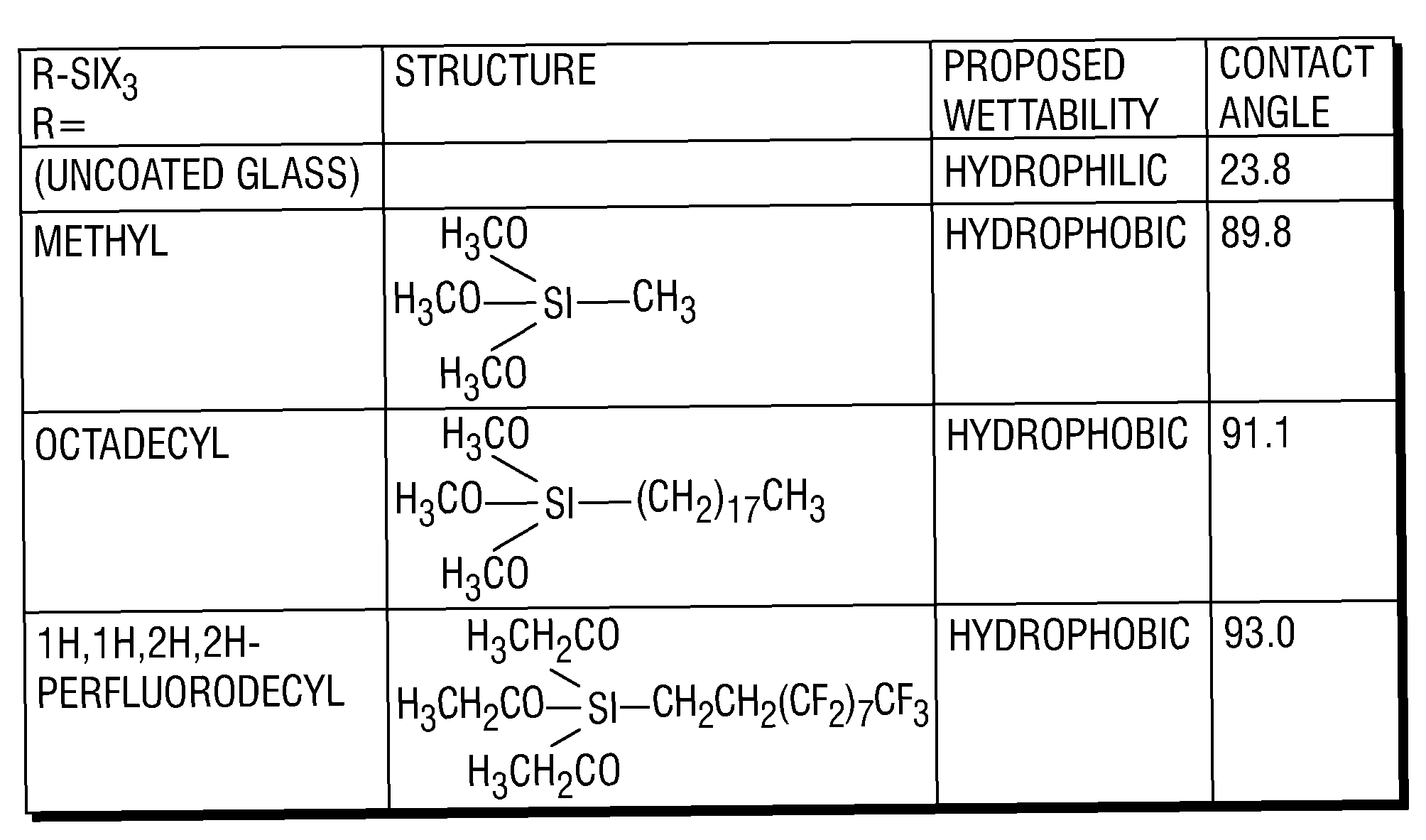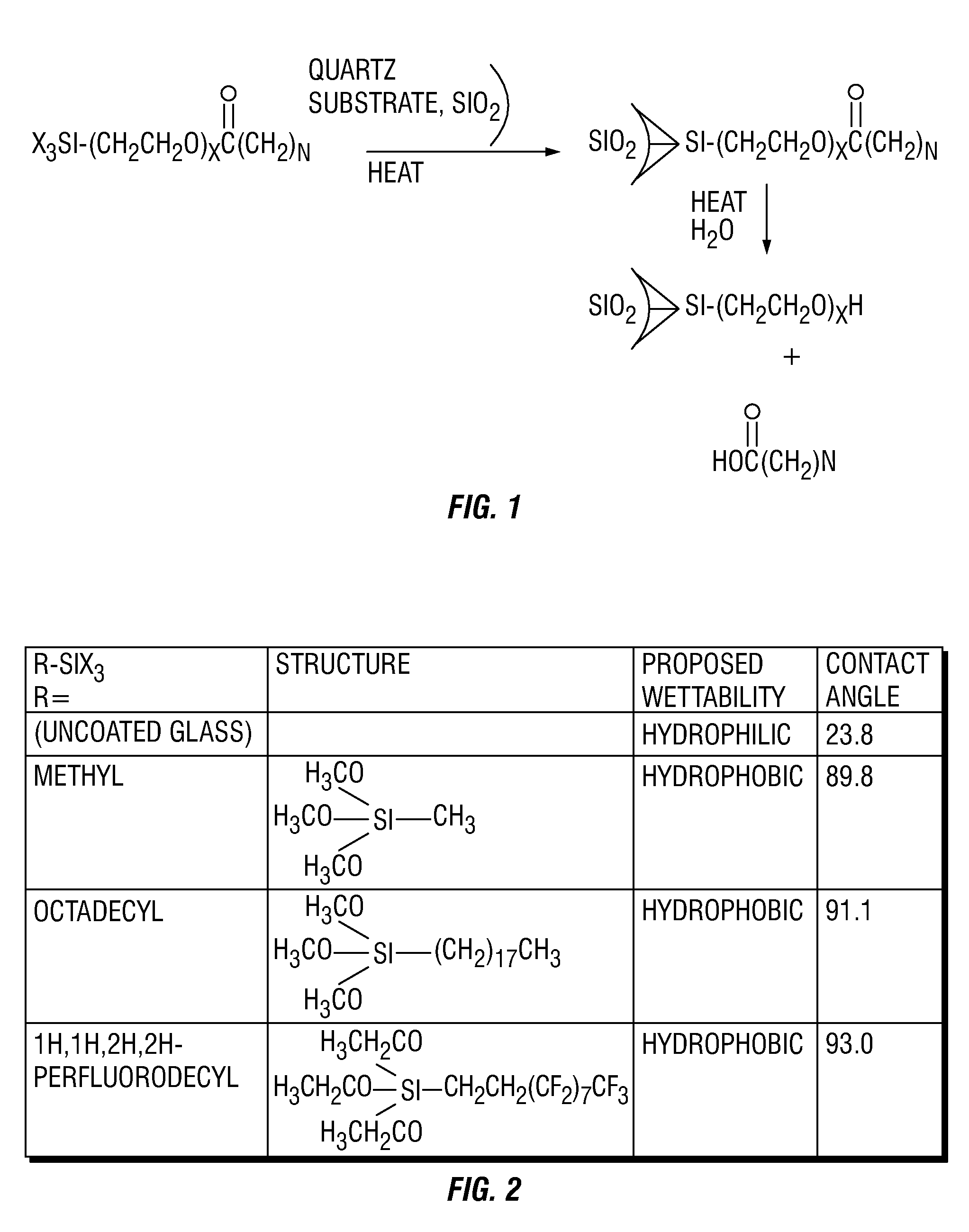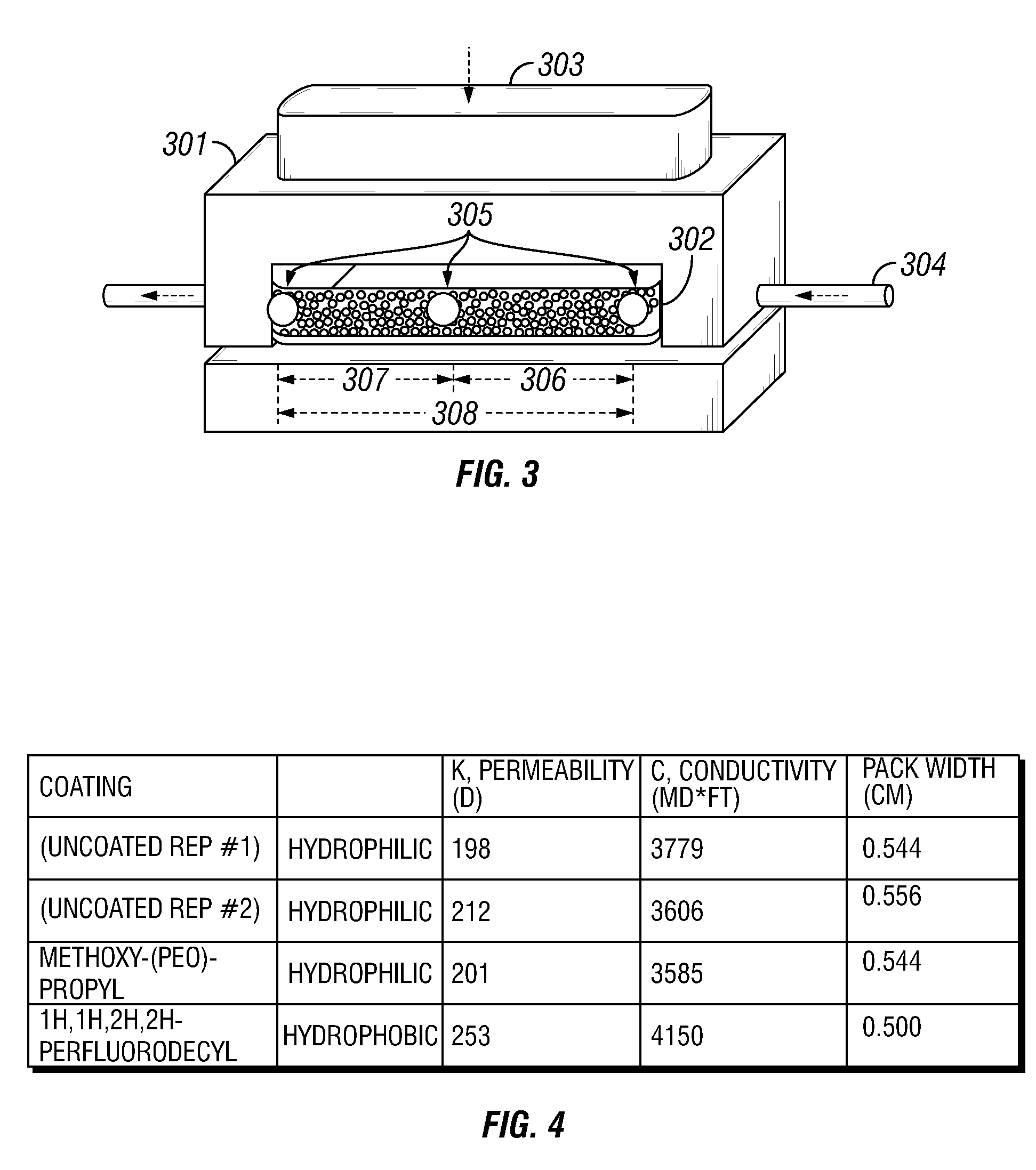Surface-modifying agents for wettability modification
a technology of surface-modifying agents and wettability modification, which is applied in the direction of fluid removal, chemistry apparatus and processes, and borehole/well accessories. it can solve the problems of large number of impediments to production, large number of water-control and water-block remediation treatments that are not designed for long-term formation wettability
- Summary
- Abstract
- Description
- Claims
- Application Information
AI Technical Summary
Benefits of technology
Problems solved by technology
Method used
Image
Examples
example 1
See FIG. 2
[0037]Contact angle measurements were carried out using a CAM101 contact angle instrument from KSV Instruments. For each contact angle measurement, the camera was calibrated using a 4 mm calibration ball. The water used to make droplets in the contact angle experiments was deionized water. All slides used in the contact angle measurements were 1×3 cm glass slides.
[0038]Prior to contact angle measurement or prior to coating (with organosilane), uncoated glass slides were rinsed sequentially with ethyl alcohol and deionized water. The slides were then stored on their side and were cured / dried in an oven set to 75° C. overnight (at least 12 hours).
[0039]For coating slides with organosilane, dry toluene was the solvent in which deposition occurred. Prior to the coating protocol, the toluene was stored over activated 4 A molecular sieves. For the coating reaction, 300 mL of the dried toluene was combined with 2 weight percent organosilane (purchased from Sigma Aldrich or Gelest...
example 2
See FIGS. 2 and 3
[0041]Coating protocol for the proppants used in conductivity measurements for Example 2 are very similar to those used to coat the glass slides in Example 1. The proppant used in all conductivity measurements was a 20 / 40-mesh size Ottawa sand sample. The same batch of sieved 20 / 40 Ottawa sand was used in the blank tests (uncoated proppant) and in the coating protocols.
[0042]Uncoated proppant samples were rinsed sequentially with ethyl alcohol and deionized water on a vacuum filter. The proppant samples were then stored in a jar and were cured / dried in an oven set to 75° C. overnight (at least 12 hours).
[0043]For coating the Ottawa sand samples with organosilane, dry toluene was the solvent in which deposition would occur. Prior to the coating protocol, the toluene was stored over activated 4 A molecular sieves. For the coating reaction, 200 mL of the dried toluene was combined with 2 weight percent organosilane (purchased from Sigma Aldrich or Gelest) and 1 weight ...
example 3
See FIGS. 5-10
[0052]In this set of experiments, samples of coated proppants were aged in solutions of water at the specified pH values and the specified temperatures. These experiments were carried out to qualify the degradation behavior of a number of coatings that were prepared on proppant samples per the preparation described in Example 2. Periodically, samples of the coated solid were taken out of the varied-pH solutions and were analyzed with DRIFTS spectroscopy. The spectra were obtained on a Nicolet NEXUS FTIR spectrometer with a DRIFTS accessory (Manufactured by Thermo Electron Corporation). A portion of the DRIFTS spectrum attributable to alkyl stretches (2923 cm−1) of the organic chain of the organosilane coating was observed and the changes in peak area are attributed to coating degradation.
[0053]FIG. 5 is a plot of peak area as a function of days of an additional embodiment. The proppant used was coated with 3-aminopropyltriethoxysilane and the sample was aged at pH 10 a...
PUM
 Login to View More
Login to View More Abstract
Description
Claims
Application Information
 Login to View More
Login to View More - R&D
- Intellectual Property
- Life Sciences
- Materials
- Tech Scout
- Unparalleled Data Quality
- Higher Quality Content
- 60% Fewer Hallucinations
Browse by: Latest US Patents, China's latest patents, Technical Efficacy Thesaurus, Application Domain, Technology Topic, Popular Technical Reports.
© 2025 PatSnap. All rights reserved.Legal|Privacy policy|Modern Slavery Act Transparency Statement|Sitemap|About US| Contact US: help@patsnap.com



